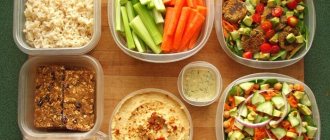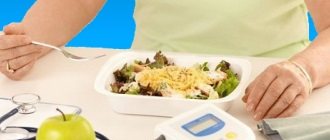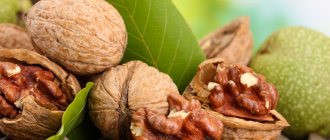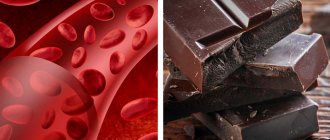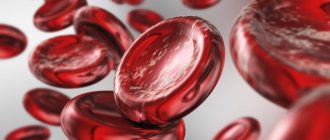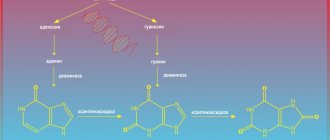Why does hemoglobin increase?
To understand the essence of the changes, it is necessary to briefly talk about where and how red blood cells are formed. They are synthesized by the bone marrow in response to signals from the body about a lack of oxygen (hypoxia) or in response to the release of special substances - stimulants of hematopoiesis.
Therefore, the reasons for the increase in hemoglobin can be diseases in which hypoxia develops - these are pneumonia and chronic bronchitis, pneumosclerosis. This also includes smoking, which also causes hypoxia.
Conditions that cause an increase in the release of hematopoietic stimulants include tumors, chronic heart and vascular diseases , toxicosis, poisoning and much more. In addition, the cause of an increase in hemoglobin can be blood thickening due to dehydration or heat, excessive sweating .
In any case, if the hemoglobin level is above 130-140 g per liter of blood in women and above 150 g per liter of blood in men, a doctor’s consultation is necessary.
Basic principles
Hemoglobin is a protein whose molecule contains iron. It cannot be synthesized by the body on its own and must enter the body with food.
The following principles of food consumption are basic to the diet:
- low in iron or in a form that is poorly absorbed;
- reducing the absorption of this microelement by the body;
- activating intestinal peristalsis, since the bulk of substances enters the blood, retaining in its thick section.
The diet should be predominantly vegetarian , low in protein. Vegetables and fruits are boiled, stewed or baked before consumption. This reduces the absorption of iron and facilitates digestion in the gastrointestinal tract.
Boiled and baked chicken breasts, white meat of other game can be included in the diet only two weeks after starting the diet for men, pregnant and lactating women 80-100 g per day.
At elevated levels, the blood becomes viscous , slowly moving through the vessels and capillaries. Therefore, drinking large amounts of clean water becomes an urgent need with this deviation. It is advisable to drink from 2 to 3 liters per day, depending on body weight and ambient temperature.
The daily calorie content for men is 2700-3000 kcal, and for women - 2000-2500 kcal. The recommended daily food weight for men is 2.5-2.8 kg, for women - 2.0-2.3 kg.
It is advisable to take food three times a day with two fruit or dairy snacks.
Treatment method: proper nutrition
Of course, treatment will be based on the cause of the disease, but one of the important stages in any treatment is proper nutrition . Following a diet gives in most cases quite pronounced results in parallel with drug therapy. The doctor will suggest you a specific diet, but we will give only the basic principles of nutrition.
The first thing that comes to mind in a situation with increased hemoglobin is to eat less foods containing iron, but this is the wrong tactic. This practice is possible only with hemochromatosis, a special hereditary disease with excessive absorption and deposition of iron in body tissues. Only with it will a special restrictive diet be indicated. In all other cases it is unjustified. Therefore, the diet will need to be based on what causes an increase in hemoglobin.
Grodno University Clinic
Iron deficiency anemia is a pathological condition caused by a decrease in hemoglobin protein in the blood, the main task of which is to transport oxygen to tissues and internal organs.
Who suffers from anemia?
In most cases, anemia occurs in women expecting the birth of a child, nursing mothers, people with weakened immune systems and often sick, patients who have undergone surgery or lost a lot of blood.
The development of this pathology can also be caused by certain diseases of the small intestine and the immunity of vitamin B12, without which the absorption of iron by the body is impossible.
How to recognize anemia?
The main clinical manifestations of iron deficiency anemia are:
- Fast fatiguability;
- Dizziness;
- Apathy and lack of appetite;
- Pale skin;
- Brittle hair and nails;
- Flashing “flies” before the eyes; changes in taste preferences - for example, patients note a desire to eat chalk or earth;
- Shortness of breath and rapid heartbeat.
Anemia poses a danger to the human body, so this disease should not be left to chance. Due to insufficient oxygen supply to tissues and organs, the brain and heart begin to suffer, as a result of which a person develops concomitant diseases and pathologies.
Iron deficiency anemia is especially dangerous for expectant mothers, since the baby in the womb does not receive enough oxygen and nutrients. As a result, the fetus begins to lag behind in development, and there is a risk of premature birth, weakness of labor and the birth of a child with low birth weight.
Treatment of anemia
In modern pharmacology, there are a huge number of drugs that increase the level of iron in the body, but they need to be taken for a long time and according to a certain scheme. If anemia is detected, you should not immediately grab medications, and doctors themselves often recommend adjusting the level of hemoglobin in the blood with the help of food.
What can you eat if you have anemia?
The level of iron in the body in the initial stages of anemia can be increased with the help of food:
- Green apples;
- Buckwheat porridge;
- Liver – preference is given to beef liver, since the iron content in this product is maximum;
- Pomegranate;
- Parsley;
- Beef;
- Turkey;
- Apple juice;
- Oatmeal.
What is better to refuse?
It is important to know that the absorption of iron from food is prevented by such foods as:
- Milk;
- Black coffee and tea;
- Fresh baked goods;
- Chocolate and various cakes;
- Fatty, smoked, spicy, salty and hot dishes.
It is better to temporarily exclude pork from your diet. Dairy products should not be excluded, but it is important not to combine them with foods rich in iron, since its absorption by the body will be minimal.
For example, if you really like milk porridge, you will have to give it up for some period. Eat the porridge in its pure form, and you can drink milk 1.5-2 hours after eating. During this period of time, the body has time to completely extract iron from food and absorb it.
Many expectant mothers suffer from low blood pressure, from which they save themselves with a cup of coffee in the morning. It is important to remember that caffeine-containing drinks completely block the absorption of iron by the small intestine, so it is better to avoid them while treating anemia, especially since they have no benefit. Replace coffee and black tea with compotes or fruit drinks made from fresh berries, which are rich not only in iron, but also in other important microelements and vitamins.
If your doctor has prescribed you iron-containing medications, you should consider some of the nuances of taking them:
- It is better to take iron supplements 1.5 hours before meals or 2 hours after, then nothing will interfere with the absorption of the microelement;
- The tablets should be taken with an acidified liquid, such as compote, juice or just water with a slice of lemon. Iron is quickly absorbed by the body when interacting with vitamin C;
- It is not recommended to drink tea, coffee or eat food within 40-60 minutes after taking an iron tablet.
Approximate diet for iron deficiency anemia
Breakfast: oatmeal with banana, sweet crackers and green tea;
Lunch: beetroot soup, bran bread, buckwheat porridge and turkey cutlet, dried fruit compote;
Afternoon snack: smoothie made from ripe berries or baked apples;
Dinner: salad of fresh vegetables and herbs, beef liver soufflé;
Before bed - a glass of kefir.
When planning a diet and following doctor's recommendations, patients with mild forms of anemia can restore normal iron levels in the blood without the use of medications.
Remember that self-medication of anemia is completely unacceptable, since a lack of hemoglobin in the blood can be caused by severe diseases of the small intestine and diet alone will not be enough!
Radiologist Blazhevich A.O.
Effect on the body
Vegetarianism has been practiced by doctors and healers since ancient times to improve the health of the body.
Therefore, a diet that reduces the body’s production of hemoglobin will have a beneficial effect on the body:
- cleansing of impurities and toxins;
- updating the perception of reality;
- awakening creative abilities, increasing the productivity of intellectual work.
Vegetarian freshly prepared food tastes good , is easily digested, and does not linger in the large intestine.
The natural microflora is restored, the production of protective mucus is enhanced, microtraumas and ulcers are healed.
Pros and cons, contraindications
The main advantages of the diet:
- a beneficial effect on a slagged body, especially after prolonged use of medications;
- ease of preparation;
- cheapness and availability of products.
Lowering hemoglobin is much easier and cheaper than increasing it.
But sticking to vegetarianism for a long time is prohibited for people with:
- diabetes mellitus;
- intense physical activity;
- pregnancy and breastfeeding.
Drinking large amounts of fluid is contraindicated in some kidney and liver diseases. In these cases, the diet and drinking regime are agreed upon with a specialist.
Recommendations from nutritionists
During the diet, it is advisable to reduce salt intake to 7-8 g per day to facilitate the work of the heart in pumping viscous blood.
Also not recommended:
- intense physical activity;
- visiting a bathhouse, sauna, solarium.
For increased blood viscosity, the following are useful:
- race walking;
- swimming;
- positive emotions from watching movies, reading books, etc.
When organizing your diet, consider the following:
- It is advisable to consume vegetables, fruits, bread and animal protein (if allowed) before 17.00, as these products provide energy;
- It is better to eat the bulk of fermented milk products in the evening in combination with sweets (jam, jelly).
Diet leads to stimulation of the nervous system . Calcium contained in kefir or cottage cheese has a calming effect, especially in combination with carbohydrates.
To give vegetable and dairy dishes an interesting taste, you can use various seasonings - vanillin, cinnamon, cardamom, citrus zest. This will improve your mood and even out the emotional background, which can be tense when hemoglobin increases.
List of permitted and prohibited products
From the point of view of nutritionists, iron in foods is contained in two forms:
- heme, which quickly increases hemoglobin;
- non-heme, slowly absorbed by the body.
Only foods with non-heme iron are suitable for this diet.
These include:
- milk, kefir, natural yoghurts, cottage cheese;
- all types of hard cheeses;
- eggs.
The listed products also contain phosphates, which slow down the absorption of iron.
Non-heme iron is also included in any heat-treated vegetables and fruits, with the exception of those colored red and sour.
Fresh cranberries, for example, are highly recommended foods for the diet, although they are sour and red in color. The tannins included in its composition do not allow excess iron to be absorbed, and vitamin C in bound form thins the blood.
Drinks that contain phytates and tannins slow down the body’s absorption of iron:
- Black tea;
- coffee;
- quince infusion.
Tocopherol (vitamin E) promotes the removal of iron from the body , so when dieting it is necessary to consume butter and vegetable oils.
You can only eat bran bread, no more than 100 g per day, since cereals promote the synthesis of hemoglobin, but bran adsorb iron in the intestines, preventing it from being absorbed.
Sugar is allowed in moderate quantities in the absence of contraindications, up to 50-60 g per day in permitted cereals, coffee, tea, fruit drinks and jellies.
If hemoglobin is elevated, products with heme iron are prohibited , that is, they quickly increase hemoglobin:
- offal, beef, pork, red poultry meat;
- fish and other seafood in any form.
- soft and processed cheeses;
- legumes;
- nuts, especially walnuts;
- chocolate, cocoa;
- raw vegetables, herbs and seasonings, including spinach, celery, parsley.
It is recommended to sharply limit the intake of vitamin C, which promotes the rapid absorption of iron by the body, which is found in the following foods:
- citrus fruits;
- fresh and sauerkraut;
- currants, strawberries, etc.
Also prohibited are foods rich in B vitamins and the trace element copper , which are catalysts for hemoglobin synthesis:
- bread (without bran);
- all cereals, except semolina and pearl barley.
During your diet, you should not get carried away with freshly squeezed juices, honey and dried fruits. Confectionery products, fried foods and canned food will also have to be excluded from the diet, as they increase blood viscosity.
To normalize your blood count, you need to give up smoking and alcohol , which contribute to dehydration.
Folk remedies
Among the traditional methods of treatment, the truly effective ones (and recommended by doctors themselves) are:
- Mumiyo with water. It’s easy to prepare: add 0.5 grams of mumiyo to 1 glass of water (or 1 tablet if used in this form). Drink on an empty stomach. This helps normalize the water-salt balance, reduce blood viscosity, and accelerate the absorption of calcium.
- Infusion based on burdock root. It also affects the water-salt balance and slows down metabolism. To prepare such a decoction, you need to mix 150 grams of fresh grated burdock roots with 1 liter of boiling water and leave until it cools completely. Take 100 milliliters 4 times a day before each planned meal.
- Horsetail tincture. It has a strong diuretic effect, reduces the concentration of sodium in the blood, and normalizes the metabolic rate. For preparation, dried pagons of the plant are used. 30 grams of these are poured into a glass of boiling water, left for 2 hours, and drunk in one gulp. The course of treatment is no more than 7 days, then a mandatory break is taken for 5–10 days (to minimize the load on the urinary system).
- Aloe based tincture. It is prepared as follows: 35 grams of aloe pulp (without needles) is poured with 200 milliliters of strong alcohol (preferably moonshine or alcohol). Leave for 1 week in a dark place at room temperature. Take 4 – 6 drops 3 times a day after meals. You can replace aloe with agave - the biochemical composition of these indoor flowers is almost identical.
- Tincture of calendula. Ready-made can be purchased at almost any pharmacy. But you can cook it yourself at home. You will need 15 grams of dry calendula base and 150 milliliters of vodka. Leave for only 2 days, take 1 teaspoon 2 times a day (after breakfast and dinner).
- Clove tincture. Although this is an extremely bitter remedy, it helps to quickly reduce the bioavailability of iron. To prepare the tincture, mix 8 dried clove inflorescences and 50 milliliters of vodka. Leave for 3 days. Take 5 drops 3 times a day. The main thing is not to overeat or drink. It is generally better to abstain from food and drink for the next 1.5 hours after using the product.
